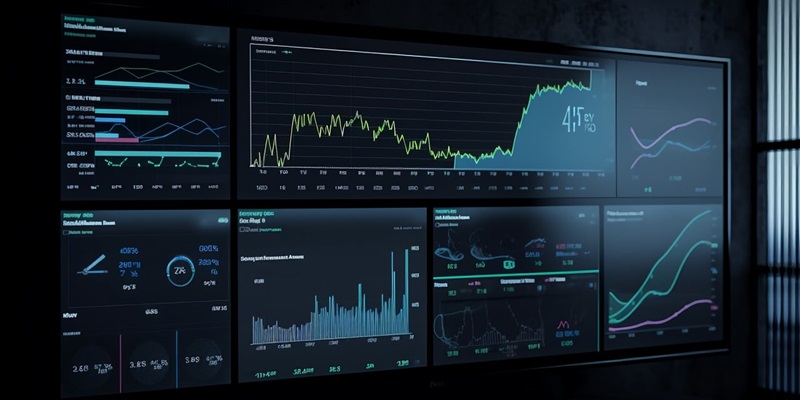In today’s data-driven world, organizations are increasingly realizing the importance of analytics and artificial intelligence (AI) in making informed decisions. By leveraging complex statistical algorithms and sophisticated machine learning techniques, analytics and AI play a pivotal role in unlocking valuable insights from both structured and unstructured data. This article explores the various types of analytics, the integration with business intelligence (BI), the role of AI in data analysis, use cases across different departments, and the option of a standalone or integrated approach.
Overview of Analytics and AI
To understand analytics and AI, it is essential to distinguish between the two. While analytics involves leveraging both structured and unstructured data to support corporate decision-making, AI relies on complex statistical algorithms developed by data scientists to analyze this data. AI goes beyond traditional analytics by automating reasoning processes and reducing the need for human intervention.
Diagnostic Analytics
Diagnostic analytics delves deep into past events or outcomes to investigate their causes. By understanding the factors or actions that contributed to a particular result, organizations can identify areas for improvement. Common applications include identifying the root causes of product failures, pinpointing bottlenecks in supply chains, and investigating service disruptions. With diagnostic analytics, organizations can optimize their strategies and prevent future issues.
Descriptive Analytics
Descriptive analytics summarize and interpret historical data to understand an event or outcome. By analyzing patterns, trends, and relationships, organizations can gain valuable insights into their operations, customers, or markets. For example, descriptive analytics can help identify customer preferences, track sales performance, or assess the impact of marketing campaigns. This understanding enables organizations to make data-driven decisions and drive business growth.
Predictive Analytics
Predictive analytics leverages statistical methods and machine learning algorithms to forecast future outcomes based on historical data. By analyzing patterns and trends, organizations can make accurate predictions regarding customer behavior, market demand, or operational performance. Predictive analytics helps mitigate risks, optimize resource allocation, and make proactive decisions. From demand forecasting to fraud detection, organizations can anticipate future scenarios and take timely actions.
Prescriptive Analytics
Prescriptive analytics takes predictive analytics a step further by suggesting actions that can be taken to influence desired outcomes. By analyzing various scenarios and their potential outcomes, organizations can make informed decisions based on data-driven recommendations. For instance, prescriptive analytics can suggest optimal pricing strategies, recommend inventory management techniques, or propose personalized marketing campaigns. This proactive approach empowers organizations to shape their future and drive desired results.
Integration with Business Intelligence
Business intelligence serves as the overarching framework for analytics and AI. By integrating analytics and AI capabilities into a comprehensive BI platform, organizations can unlock the full potential of their data. This integration provides a centralized platform for data analysis, visualization, and reporting, enabling stakeholders at all levels to access actionable insights in real-time. The seamless flow of information across departments fosters collaboration, accelerates decision-making, and ensures a holistic view of the business.
The Role of AI in Data Analysis
AI plays a vital role in analyzing vast amounts of data efficiently and accurately. By leveraging complex statistical algorithms, it can identify patterns, detect anomalies, and make predictions with a higher degree of accuracy than traditional analytics. AI automates reasoning processes, reducing the time and effort required for data analysis. As a result, organizations can make faster, data-driven decisions and focus on strategic initiatives that drive growth.
Standalone vs. Integrated Approach
Organizations have the flexibility to choose between using analytics and AI as standalone solutions or integrating them into a larger BI framework.
1. Standalone Approach: Some organizations may prefer using analytics and AI independently to meet specific needs. This approach allows for agility and customized solutions, but it may lead to data fragmentation and a lack of cohesive analytics.
2. Integrated Approach: Integrating analytics and AI into a comprehensive BI framework offers a centralized platform, enabling organizations to leverage data holistically and empower stakeholders with actionable insights. This approach ensures consistency, collaboration, and a unified view of the organization’s data-driven initiatives.
The role of analytics and AI in decision-making cannot be overstated. By leveraging the power of analytics, organizations can gain deep insights into their past, present, and future. From diagnostic to descriptive, predictive, and prescriptive analytics, the ability to harness data empowers organizations to make informed decisions, optimize operations, drive growth, and stay ahead of the competition. Whether as standalone solutions or integrated within a larger BI framework, the combination of analytics and AI holds immense potential for organizations across all sectors. Embracing this transformative technology is key to unlocking the full power of data and driving business success in the digital age.

